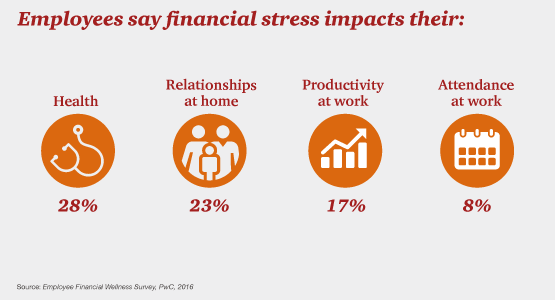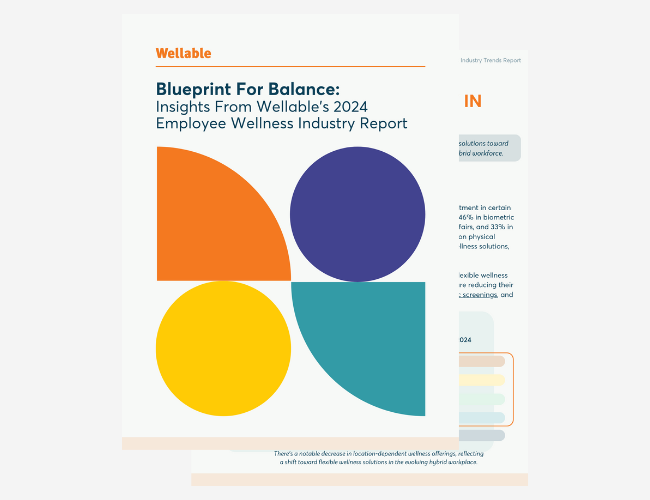Despite the long economic recovery in the United States and the strong performance of the stock market, financial wellness is not improving for many individuals and it is resulting in stress. According to the Employee Financial Wellness Survey from PricewaterhouseCoopers (PwC), which tracks the financial well-being of full-time employed U.S. adults across the country, “many employees never fully regained stable footing” after the Great Recession. Below are five statistics from the study that should make all employers concerned about the financial health of their employees and take action by incorporating financial wellness programs at work.
Increased Financial Responsibilities
According to the survey, the percentage of employees providing financial support for parents or in-laws increased 6% from 2016 (22%) to 2015 (16%). Longer lifespans and lack of adequate long-term health care protection are increasing the financial responsibility onto the next generation.
Inadequate Emergency Savings
Employees are not satisfied with the amount of their emergency savings with 55% saying so compared with 51% in 2015. Women have it worse with 60% saying they don’t have enough emergency savings set aside for unexpected expenses while 50% of men feeling the same way.
Rising Credit Card Balances
Employees are increasingly turning to credit cards to fill their funding shortfall. Forty-three percent of employees earning $100,000 or more consistently carried credit card balances in 2016. In 2015, only 32% did. Baby boomers have it worst. In 2015, 37% of boomers carried balances on their credit cards while 46% did so in 2016.
Underwater Mortgages
Eighteen percent of employees who own homes and carry a mortgage said that the outstanding balance of their mortgage is greater than the current value of their home. Of the 18%, 59% have attempted to modify the terms of their mortgage with their lenders (consistent with 60% last year) and 33% have received a foreclosure notice within the last 24 months (also 33% last year).
Financial Stress
Financial stress is the biggest source of stress for employees with 45% saying that it was their biggest stressor in their lives. Health concerns (15%), their jobs (20%), and relationships (15%) also topped the list.

Financial wellness programs are just beginning to become staples of employee health programs. For organizations looking to incorporate financial wellness into their benefits offering for the first time, there are a number of budget friendly options to choose from. For those employers with a 401 (k) plan, the plan administrator should have free financial wellness resources for their clients to use. There are also a number of advocacy groups and wellness vendors that offer a free financial wellness seminar/webinar.












